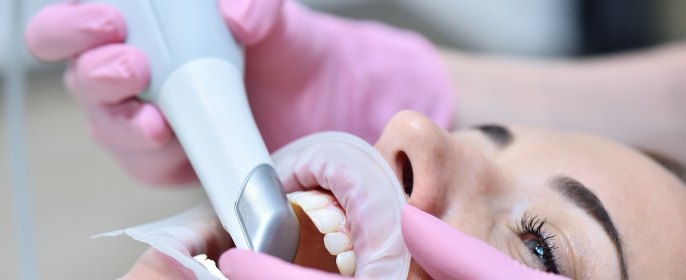Dental technologies are going digital. Are you?

New technologies are changing the way we’re living our daily life. From smartphones to self-driving cars, the digital revolution has tremendous impacts on how we’re interacting, on our mobility and how we travel, etc. The healthcare field is particularly being reshaped by the introduction of new digital devices. Dental medicine is no exception: are dentists ready?
It is not by chance that digitisation has progressively conquered almost all fields in the last decade. Increased productivity is the main motor for this transformation and in some industries, failing to board this train often translates into significant losses, or worse, extinction. One simple reason for this is that computers are able to make use of powerful acquisition tools, such as sensors, and to process and share information faster, giving an edge compared to traditional methods.
In dental medicine, the advantages are already clear in multiple aspects of the daily practice, ranging from diagnosis and planification to the final steps of the production and execution. In addition to the gain of chair and laboratory time1, which are both beneficial to the patient and the professionals, digital dental technologies allow for maintaining the same level of quality as conventional methods. Besides higher efficiency, this adds convenience to both the patients and practitioners, reducing the stress in some critical acts such as impression taking, especially when you do not have to worry about the setting of the material or whether the laboratory technician will find the impression good enough or not: you will be able to directly evaluate this on your screen and redo minor corrections in a seamless manner by rescanning specific zones.
These technologies also open up multiple new treatment possibilities, like chairside restorations and aesthetic designs and visualizations that patients are becoming more and more interested in. Guided surgery also undoubtably presents multiple advantages, whether it is only limited to the planification phase or even extends to the surgical procedure, as it allows to reduce some of the prosthetic and surgical challenges, and to preview key points of the treatment before opening the flap.
With the increasing connectivity of our current world, everyone has continuous access to information and no age section is unexposed to the advances in healthcare and specifically in dentistry. Therefore, most of the patients are already doing their due diligence before the appointment, and often start by inquiring about specific techniques or evolution in our profession, like aligners or optical impressions. It will be a matter of time before this becomes a criterion of selection, giving heads start to the practitioners who got in early.
Go digital now with your dental practice
Despite a keen and growing interest in resorting to digital technologies, taking the leap requires specific training. A pioneer in the field, the University of Geneva offers a Master of Advanced Studies (MAS) in Digital Dental Technologies. This 60 ECTS-credit executive education program aims to train dentists to use digital technologies in their daily practice. One key feature of this program is that the core of the cursus is the optimal approach and complete strategies that accompany these technologies, rather than only teaching the mode of use of the different machines. The participants will be fully exposed to the minimally invasive philosophy that the University of Geneva is known for, which is the basis for modern dental medicine2. Built on a unique multidisciplinary approach and taught by renowned lecturers, the curriculum fits with the pursuit of professional activity. Six on-campus training weeks are organized approximately every four months in Geneva, and weekly online courses ensure that no rocks are left unturned by the end of the program. This program is ideal for dentists who would like to maintain their professional activity and still be able to pursue this structured education.
1 Sailer I, Benic GI, Fehmer V, Hämmerle CHF, Mühlemann S. Randomized controlled within-subject evaluation of digital and conventional workflows for the fabrication of lithium disilicate single crowns. Part II: CAD-CAM versus conventional laboratory procedures. J Prosthet Dent. 2017 Jul;118(1):43-48.
2 The University of Geneva is ranked 29th on the QS World University Rankings in the field of dentistry (2021).
